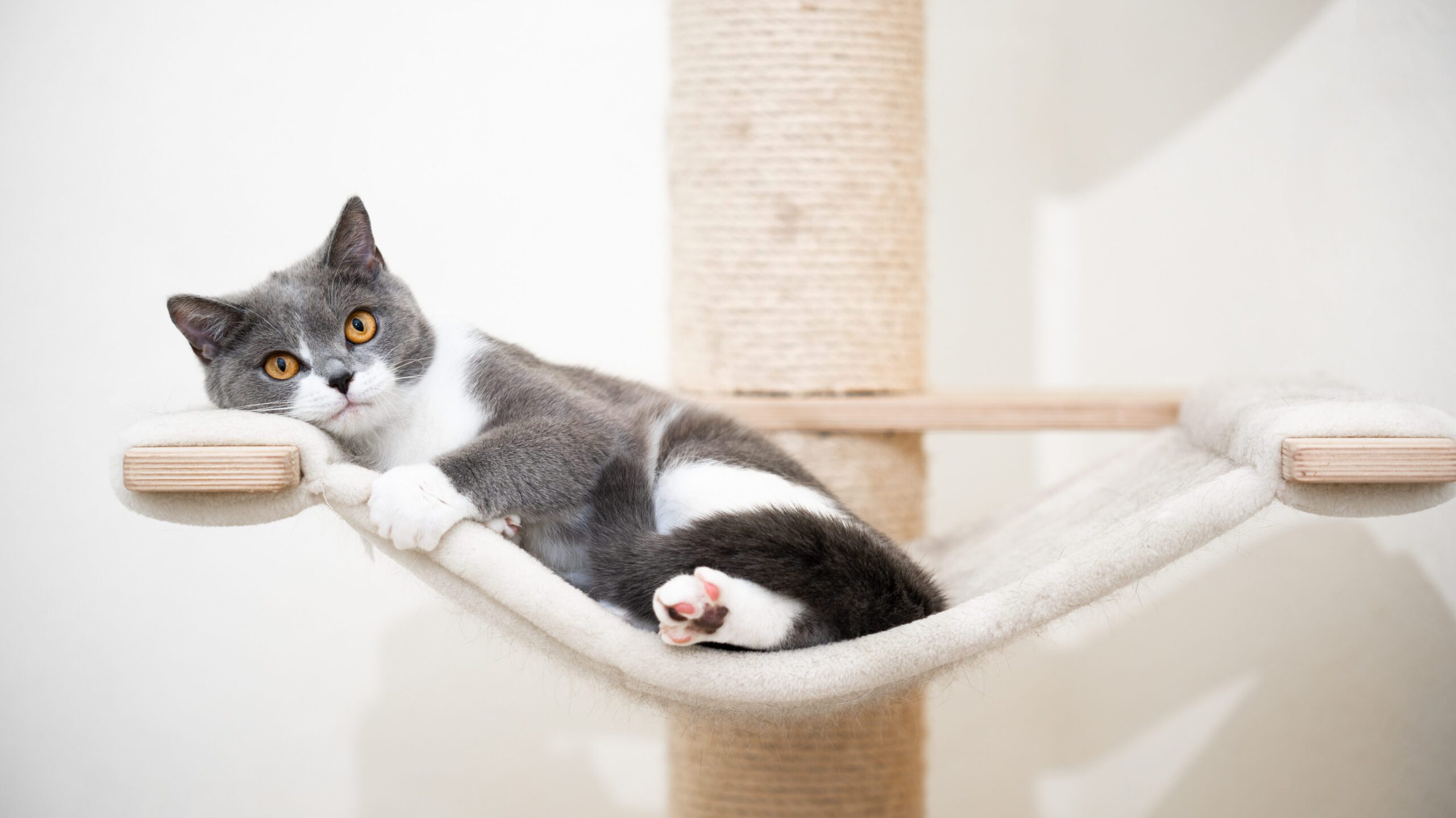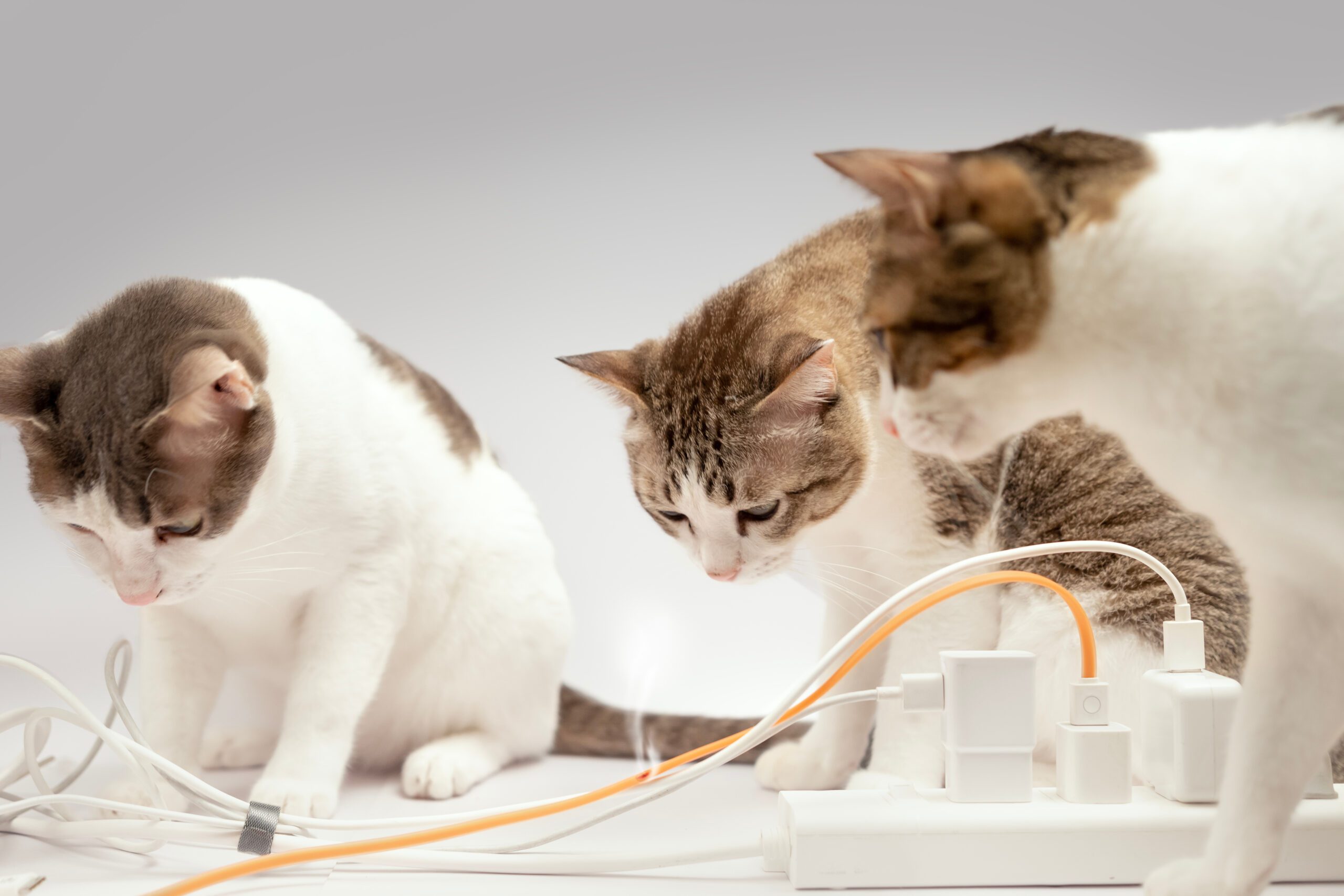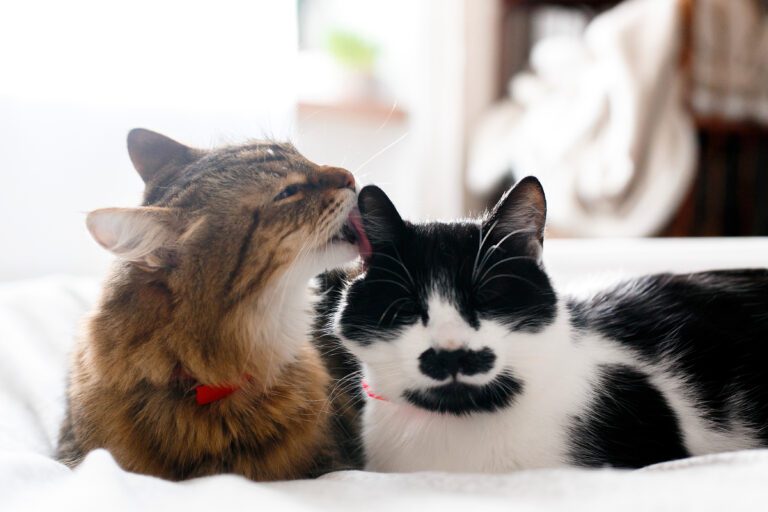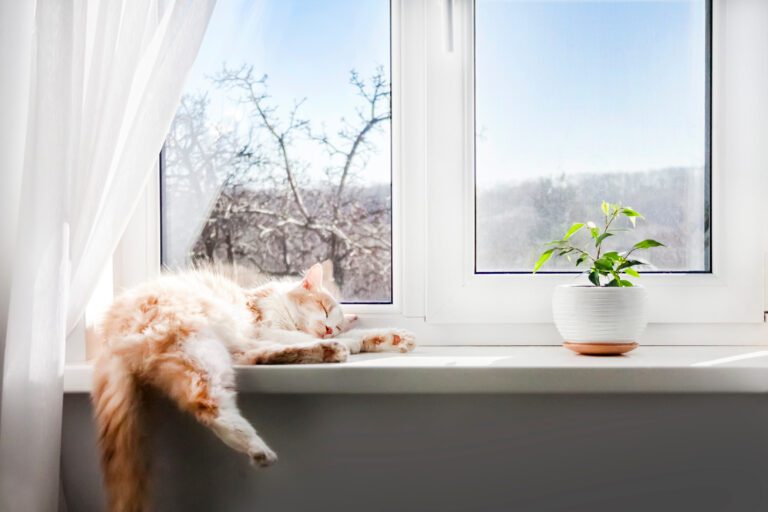Hiding Cords and Protecting Pets from Household Hazards
Our beloved pets bring immense joy to our lives, but they can also be curious and mischievous explorers. As responsible pet owners, it’s crucial to create a safe environment for our furry friends to prevent accidents and protect them from household hazards. One common concern is keeping cords and other dangerous items hidden away from curious paws and jaws. In this blog, we’ll explore some practical tips and strategies to help you effectively hide cords and safeguard your pets.
Assess the Potential Hazards
- Start by identifying potential hazards in your home that could pose a risk to your pets.
- Common dangers include electrical cords, cables, chargers, and household chemicals or hazardous foods. Check out our cat and dog hazardous food blogs for more information.
- Understanding the risks will help you prioritize and take necessary precautions to keep your pets safe.

Cord Management
Cords can be enticing toys for pets, but chewing on them can lead to electrical shocks, burns, or even choking hazards. Here are some effective pet proofing methods when it comes to cords and wires.
- Cord concealers: Use cord concealers or cable management systems to neatly hide cords along walls or furniture. These products are designed to protect the cords while keeping them out of your pet’s reach.
- Cord covers and tubing: Opt for cord covers or flexible tubing to enclose and protect cords. These can be particularly useful near power outlets or entertainment centers where multiple cords are present.
- Cord clips and ties: Secure cords to walls or furniture using cord clips or ties. This helps prevent them from dangling and becoming tempting playthings for your pets.
- Rearrange furniture: Strategically position furniture to block access to cords, making them less accessible to your pets. Ensure there are no gaps where your furry friends can squeeze through.
Cordless Alternatives
- Consider replacing certain corded devices with cordless alternatives whenever possible.
- For instance, opt for cordless window blinds or wireless chargers to eliminate potential cord hazards altogether.
- Another effective pet proofing option are devices that connect via USB to your laptop or other smart devices. These are often out of reach from pets and can come with shorter cords.
Provide Suitable Distractions
- Redirect your pet’s attention away from cords and other hazardous foods and items by providing appropriate distractions.
- Engage them with interactive toys, puzzle feeders, or scratching posts to keep them mentally stimulated and entertained.
- Keep your pet active and play with them regularly to extract excess energy.

Secure Household Items
Apart from cords, there are other household items that can be dangerous if ingested. Try to take the following pet proofing precautions;
- Secure cabinets and drawers: Use childproof latches or locks to prevent pets from opening cabinets and accessing hazardous substances like cleaning products, medications, or sharp objects.
- Store small items safely: Keep small objects such as batteries, sewing supplies, or coins out of your pet’s reach. These items can be choking hazards if swallowed.
- Cover electrical outlets: Use outlet covers or caps to prevent pets from exploring and potentially electrocuting themselves.
Designated Pet Zones
- Designate specific areas in your home that are pet-friendly, ensuring they are free from potential dangers.
- This could be tiled areas without carpet to scratch or eat, a rec room that isn’t used so lacks random items lying around, or space in your backyard without hazardous plants or items present.
- Consider using baby gates to restrict access to certain rooms or areas where hazards are present.
As responsible pet owners, it’s our duty to provide a safe living environment for our furry companions. By implementing these tips and strategies, you can effectively hide cords and other dangerous household items from your pets. Remember to regularly inspect your home for potential hazards and make pet proofing adjustments as needed. With a little planning and foresight, you can create a pet-friendly home that ensures the well-being and happiness of your beloved furry friends.





